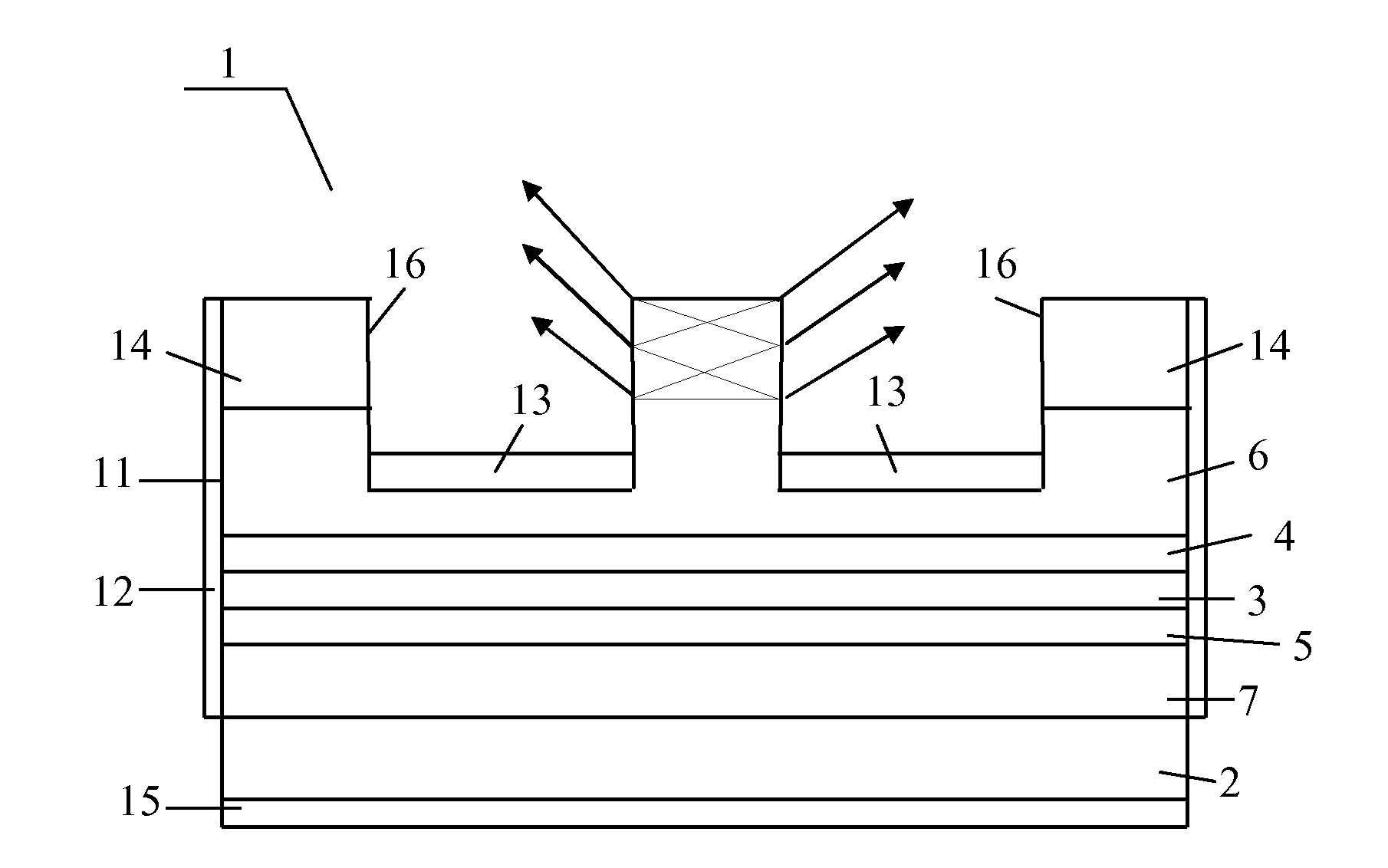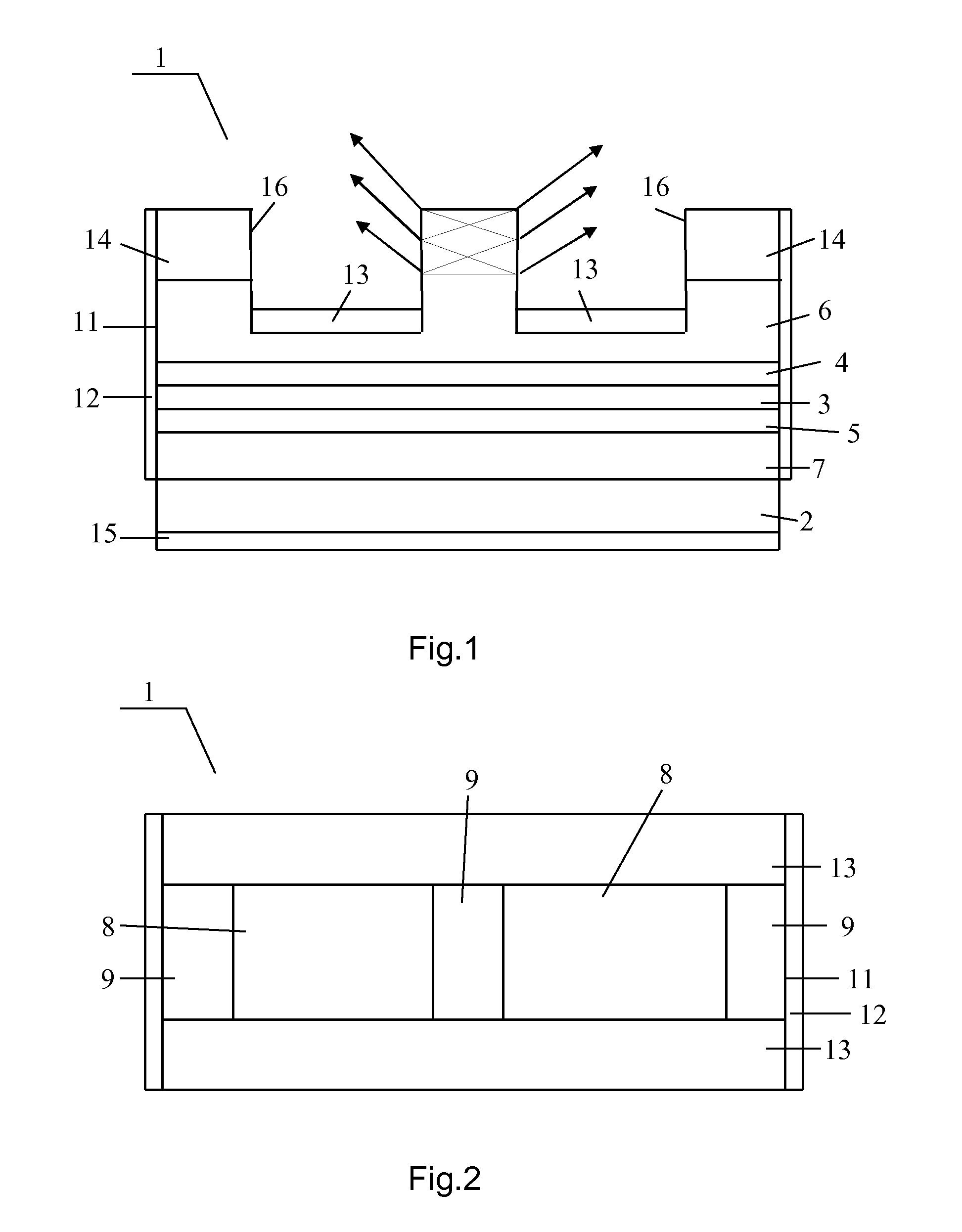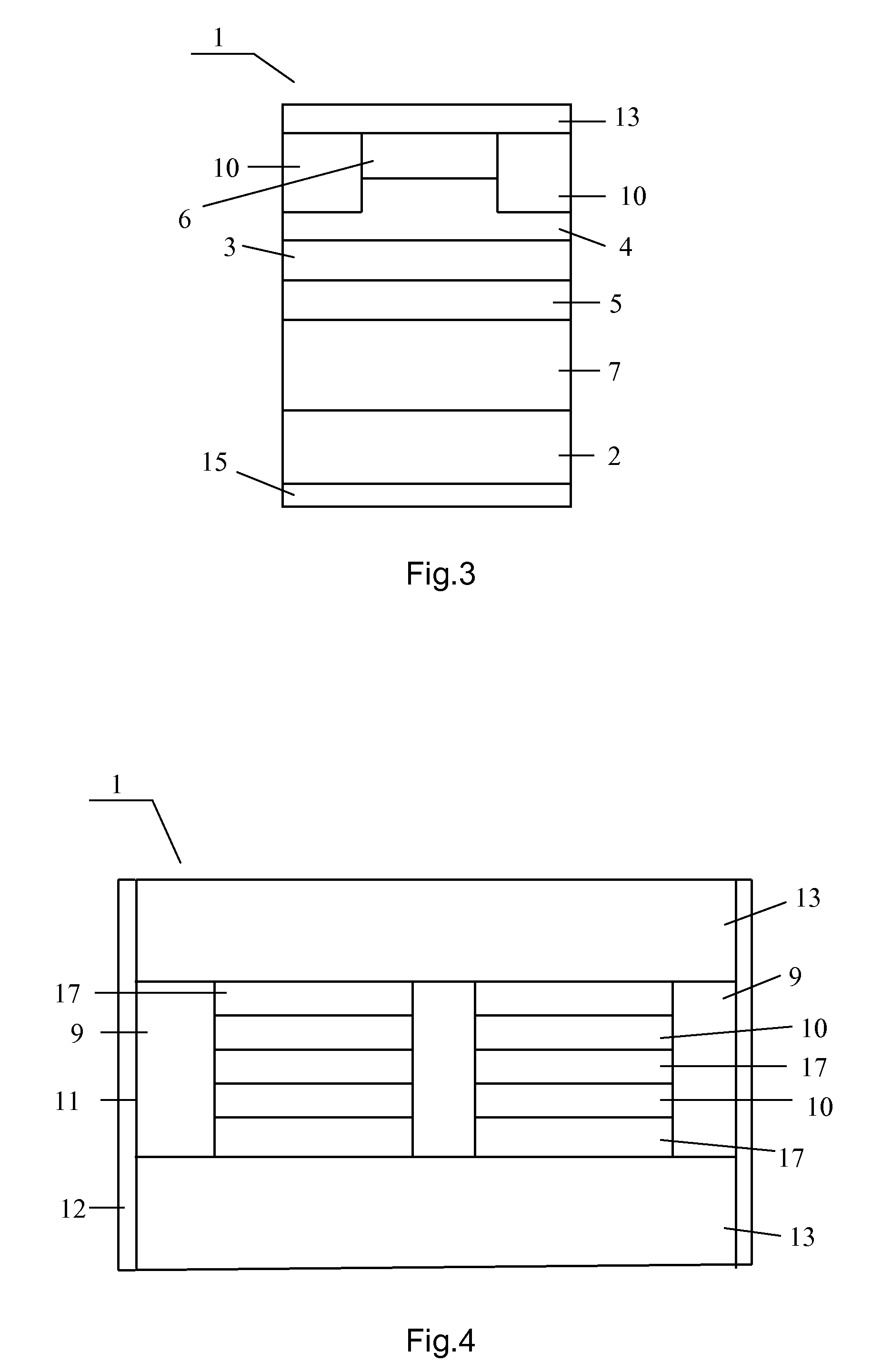Injector Laser
- Summary
- Abstract
- Description
- Claims
- Application Information
AI Technical Summary
Benefits of technology
Problems solved by technology
Method used
Image
Examples
Embodiment Construction
[0033]In the following the invention will be explained by concrete versions of its execution with references to the enclosed drawings. The presented examples of the Laser modification aren't unique and allow presence of other realizations including wavelengths within certain ranges the features of which are reflected in the multitude of attributes of the Claims.
[0034]The proposed Laser 1 (see FIG. 1-3) contains the laser heterostructure placed on the substrate 2 of the n-type GaAs. The said heterostructure is made on the basis of compounds InAlGaAs with the active InGaAs layer 3, with the waveguide layers 4, 5 and the confining layers 6, 7 of AlGaAs, placed correspondingly on the side of emission output and on the side opposite to it. The wavelength of laser emission was chosen equal to 0.98 μm. The functional bar of the Laser 1 is executed as a stripe and consists of alternating amplification regions 8 and output regions 9. The said alternation goes along the longitudinal optical a...
PUM
 Login to View More
Login to View More Abstract
Description
Claims
Application Information
 Login to View More
Login to View More - R&D
- Intellectual Property
- Life Sciences
- Materials
- Tech Scout
- Unparalleled Data Quality
- Higher Quality Content
- 60% Fewer Hallucinations
Browse by: Latest US Patents, China's latest patents, Technical Efficacy Thesaurus, Application Domain, Technology Topic, Popular Technical Reports.
© 2025 PatSnap. All rights reserved.Legal|Privacy policy|Modern Slavery Act Transparency Statement|Sitemap|About US| Contact US: help@patsnap.com



